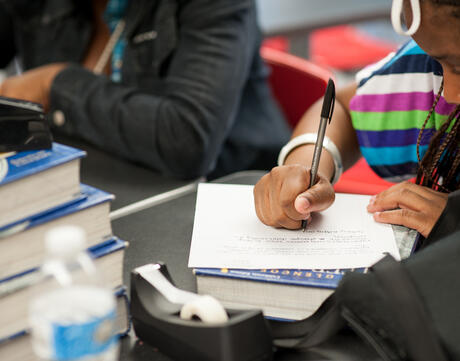
Rapid Writing
At a Glance
Language
English — USSubject
- English & Language Arts
- History
- Social Studies
Grade
6–12Overview
What Is Rapid Writing?
Rapid writing is a simple, highly structured way to get students thinking and writing about a topic. This strategy helps students clarify their thoughts by alternating between thinking and writing. It can uncover the thoughts and emotions behind our initial reaction to a piece of content, and it also builds the skill and practice of iteratively reviewing and revising throughout the writing process. This strategy is often helpful in both brainstorming and beginning to narrow the focus for discussion, and it can be used to develop a thesis statement for a formal essay or report.
Lesson Plans
How to Use Rapid Writing
Variations
Unlimited Access to Learning. More Added Every Month.
Facing History & Ourselves is designed for educators who want to help students explore identity, think critically, grow emotionally, act ethically, and participate in civic life. It’s hard work, so we’ve developed some go-to professional learning opportunities to help you along the way.
Exploring ELA Text Selection with Julia Torres
On-Demand

Working for Justice, Equity and Civic Agency in Our Schools: A Conversation with Clint Smith
On-Demand

Centering Student Voices to Build Community and Agency
On-Demand














